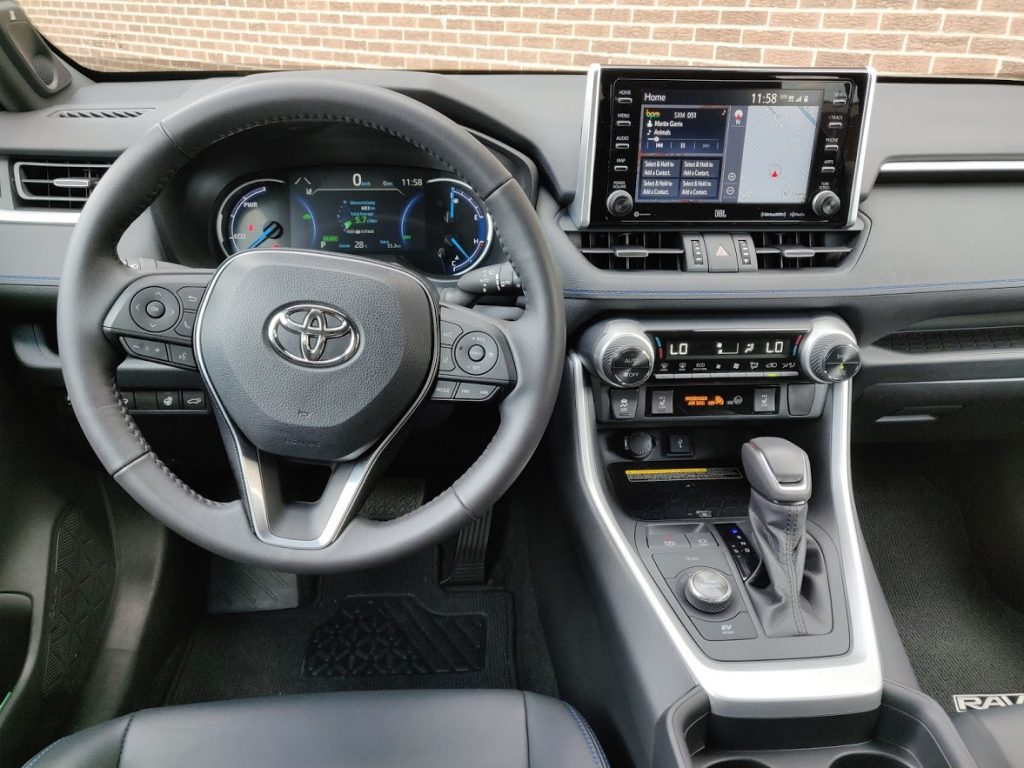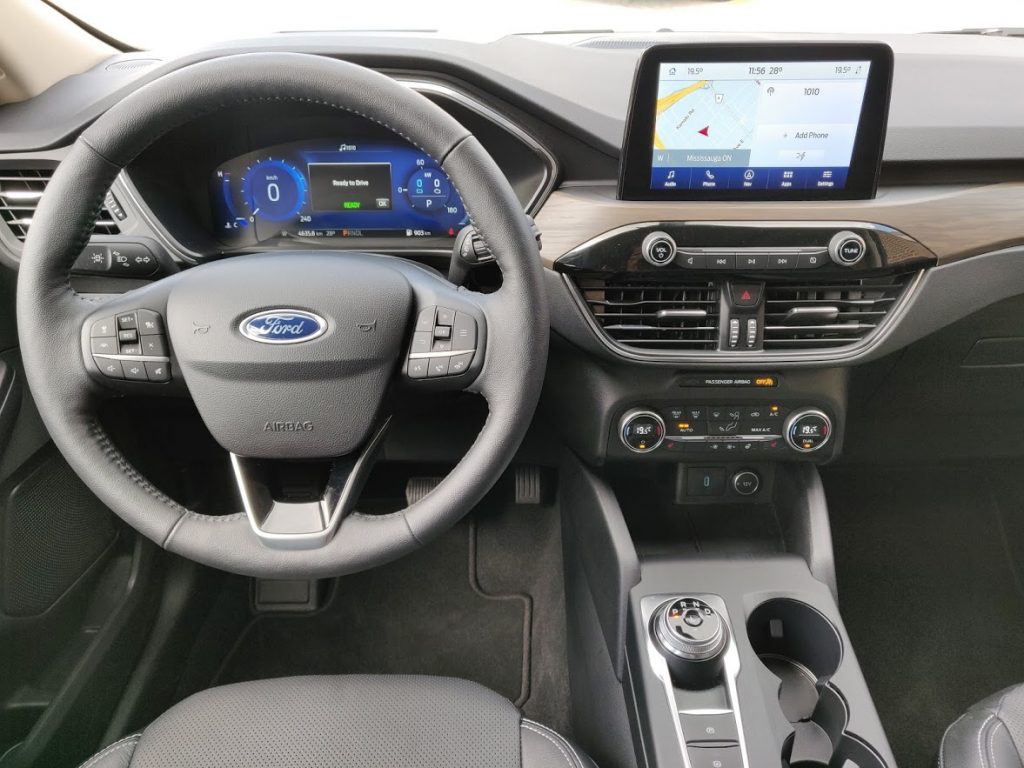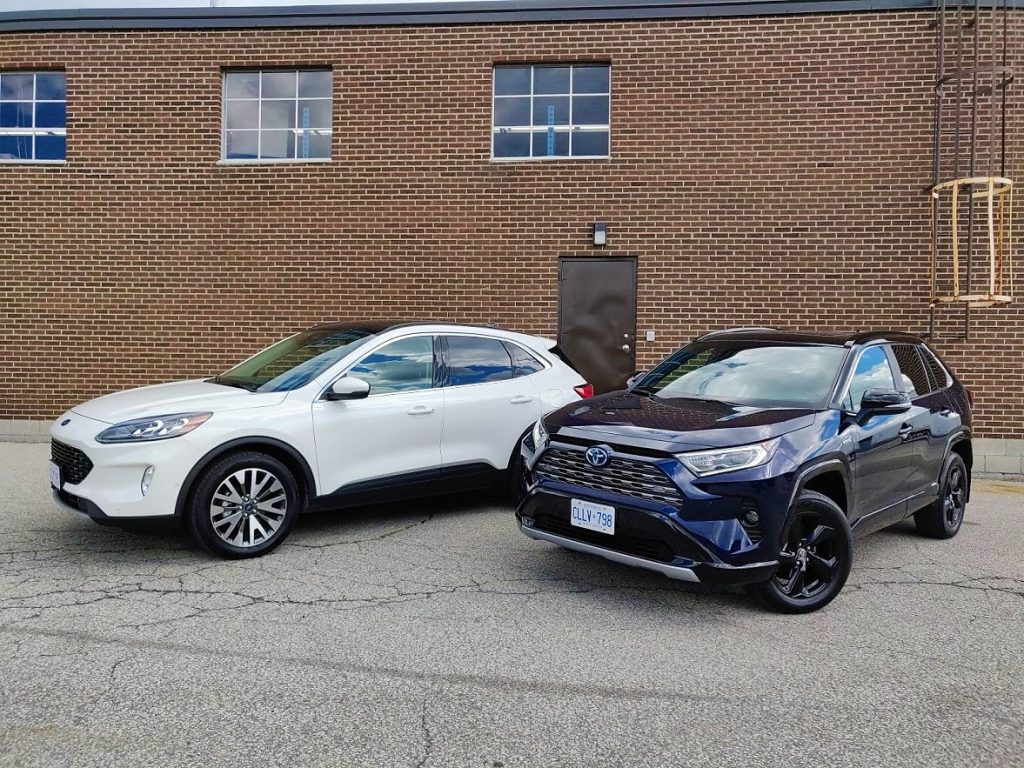By Shari Prymak
Although full-electric vehicles are on the horizon, there is still work to be done in terms of making them affordable, accessible, and practical enough for the average consumer. Until that time comes, hybrid electric vehicles serve as a viable option for eco-conscious buyers looking for an efficient no compromise solution. The price premiums that hybrid vehicles once commanded have dropped in recent years, and barriers to ownership have dropped along with them. To gauge how appealing hybrids have become, we took a closer look at two popular options in the compact crossover SUV segment: the Toyota RAV4 Hybrid and the Ford Escape Hybrid.
The RAV4 Hybrid is just one of many models available in Toyota’s expanding hybrid lineup. The hybrid version commands a modest $1,400 price premium over the equivalent gas-powered RAV4, which makes it something of a no-brainer. Toyota has been manufacturing hybrids long than most with time-tested technology, well-proven reliability, and impressive performance. Ford though is no stranger to hybrid technology either. The company has well over a decade of experience manufacturing both regular hybrid and plug-in hybrid vehicles. Compared to the RAV4, the Escape Hybrid is a relatively fresh offering, but no less capable.

In the case of both models, the hybrid systems consist of a naturally-aspirated 4-cylinder engine mated to an electric motor and a continuously variable transmission. All-wheel drive is standard on the RAV4 but optional on the Escape. Although the RAV4’s total system output is a bit higher at 219 horsepower versus 200 horsepower for the Escape, power and overall refinement feel similar. Both deliver smooth, quiet operation with a near seamless transition between electric and gas power while driving. Fuel economy is about the same as well. With a careful right foot, I managed to average about 6.0L/100km in both models, which is extremely impressive for crossovers of this size and weight.
Where the two really differ is in their appearance and character. The RAV4 goes for a more adventurous look with a rugged body cladding and angular sheet metal inspired by the off-road ready 4Runner. The Escape has a more conventional crossover look with rounded styling making it look a bit like a bloated hatchback on stilts. Despite the exterior differences, both offer impressive interior space with flexible seating and just enough room for an average sized family. The RAV4 has the edge in terms of overall cargo space, offering up a bit more cargo volume than the Escape.


In terms of technology, both models include well-designed touchscreen infotainment systems compatible with Apple CarPlay and Android Auto. The Escape has just a bit more going on with its sleeker SYNC 3 user interface and customizable digital instrument display versus the traditional-looking gauges in the RAV4. Both models, however, are very approachable in terms of user-friendless and ease of use. Although they both share a rather utilitarian interior with straightforward control setups, the RAV4 comes off as the slightly more premium product. The surface materials and finish are just a tad more impressive versus the lower rent feel of the Escape.
The RAV4 Hybrid is offered in four trim levels ranging from an MSRP of $32,350 for the base LE up to $42,750 for the Limited. The features list is very generous across all trim levels, and all models include Toyota Safety Sense active safety features. The Ford Escape Hybrid is only offered in the top Titanium trim with a starting MSRP of $36,649 with front-wheel drive and $38,149 with all-wheel drive. The only significant option is a $2,350 Premium Package which adds a large panoramic sunroof and a head-up display for the driver. Those wanting a well-optioned model with all the goodies will find the pricing of these two crossovers to be just about on par.

If a regular hybrid does not do the trick, it is worth mentioning that both models offer plug-in hybrid versions. The RAV4 Prime plug-in hybrid has an electric driving range of up to 60km before switching to hybrid mode. It also has superior performance thanks to the 302 horsepower hybrid drivetrain. The Prime is offered in SE and XSE trims priced from $44,990 to $56,990. The Escape Plug-in Hybrid appears a bit less impressive. The electric-only range maxes out at 50km and the drivetrain only produces 210 horsepower. It is also front-wheel drive only, which may be a deterrent for crossover buyers. On a positive note, the Escape Plug-in Hybrid is less expensive than the Prime, ranging in price from $37,549 up to $43,649. Both plug-in models are eligible for provincial and Federal government electric vehicle incentives which help to significantly reduce the purchase price.
Overall, both the RAV4 Hybrid and the Escape Hybrid are exceptionally well-designed crossovers. Ford especially deserves recognition for offering a hybrid crossover when competitors remain absent from this space. They have demonstrated a commitment to electrified vehicles, and the result is a well-rounded crossover perfectly suited to eco-conscious buyers. In a comparison test, however, there can only be one winner, and in this case, that winner is the RAV4 Hybrid. In addition to top-notch performance, refinement, and efficiency, it earns top marks for practicality and value for money. With Toyota’s outstanding reputation for reliability and a 10 year / 240,000km battery warranty, it also promises the peace of mind of a positive long-term ownership experience. It is one of the best compact crossovers on the market, and that makes it a clear winner.

